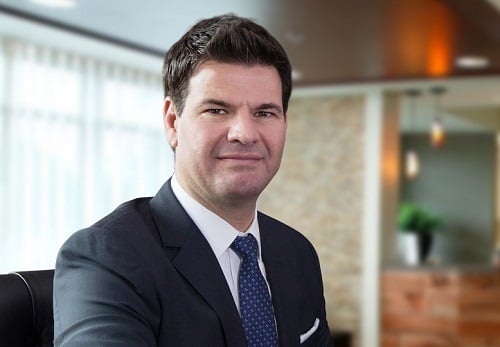For Paul Green, long-term focus and defensive strategies are essential to serve clients well

As the son of entrepreneurial parents, Paul Green wasn’t like most teenagers. He was the recipient of valuable nuggets of wisdom passed along by his enterprising parents. Possibly the most significant was the advice he got after sharing some frustrations with summer jobs he worked at.
“They’d tell me ‘Well, that’s part of working for somebody; everyone’s different and you have to toe the line,” said Green, certified financial planner, portfolio manager, and president at Green Private Wealth Counsel. “And I said, ‘Yeah, I understand. But I’m not going to work for someone else when I get older.’ I had that mindset because if your parents are doing it, it doesn’t seem that difficult. It seemed natural to me”
Aside from wanting his own business, he was also passionate about the investment industry. After being taught about stocks, Green put his money in the markets by piggybacking on his father’s brokerage account. By the time he was seventeen, he was already keeping tabs on financial news.
Green had one other passion: golf. As a junior athlete with a high national ranking, he got a scholarship to attend college in the US, which let him earn a degree in commerce. He was hired right out of college, and he got his life insurance license at his first job. He went on to get a mutual fund license, as well as CFP and CIM designations under his belt. He even enrolled in a coaching program which, together with his passion for golf, gave him the ability to focus.
Learn how to get a life insurance license here.
One other factor that motivated him professionally was an emphasis on integrity, which he learned from his parents. “It’s essential to gain people’s trust, so you’ve got to be trustworthy,” he said. “My parents instilled that in me and my sisters through their actions.”
In 1992, he was able to set up his own financial advisory firm. They offered various financial services, including setting up clients’ portfolios using mutual funds. Things went well mostly — until the financial crisis hit in 2008.
“Most of us in the business had our clients in a mix of stocks and bonds, but even those balanced portfolios had a real tough go,” he said. “For at least four or five months until early 2009, people were very fearful … there was just an overall feeling of despair and lack of control. Even after the crisis ended, it took a long time for people’s investments to break even.”
That changed Green’s outlook significantly. Realizing the need to protect people as much as possible from major market downturns, he vowed that it wouldn’t happen to his clients if he could help it — especially not to the older ones.
“For the younger people, I’m not so concerned about downturns in the market. That’s all part of investing, and time’s on their side,” he said. “I’m more concerned about risk management for pre-retirees and retirees, who are exposed to the stock markets and have no idea how severely they could drop, when it could happen, and how it could change their life.”
Green started on his new direction by tapping an expert to spot risks in the stock market. “I’m the kind of person who accepts that I know a few things, not everything,” he said. “Jeremy Fehr from SIA Charts has been a huge help to me for probably eight years, especially on the research and technical analysis side. I also tend to lean on other consultants to help me and the firm with aspects that we know we’re better off asking others about.”
The firm also consulted with clients, explaining that they would act on risk forecasts by moving at least part of their investors’ stock holdings into cash. It would help them avoid possible losses, but would also likely cause them to miss out on some spectacular rallies — which most people were fine with. “That fear of major loss is so much more powerful than the potential of not getting some of the upside,” Green said.
It wasn’t easy at first, since the firm still had to work with mutual funds. “As MFDA guys, we were trying to protect our clients, but we found it was an inefficient model. We were looking for a portfolio manager to build us a product in 2008-2009, but it didn’t happen until late 2012.
“In the meantime, we were concerned about moving our clients to cash because it would’ve been a huge job,” Green continued. “Fortunately, we never had to. Now, as a discretionary manager, we can do it in an hour. It’s very freeing to know that at any time, we can move to cash so we can protect our clients.”
Green currently has a seven-man team managing clients’ finances, but he has big plans. Aside from establishing new office branches and creating proprietary pooled funds, he wants to build out his bench of advisors.
“I’d love to get people who are wired to do this to get in the business and thrive,” he said. “From what we see, a lot of people are getting set up for major value erosion that they can’t afford. Young guns could get started with a wonderful occupation, and we could look after many more investors.”
Related stories:
Helping clients explore the financial world
Advisor: How my concept of money has changed



